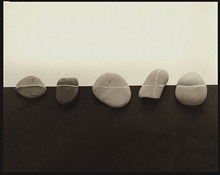I’ve been musing about that wonderful word substrate, and contemplating its many permutations. The word has uses in biochemistry and philosophy, but the meaning that intrigues me is literal. By its etymology, a substrate is an “under-layer,” or what lies behind or underneath something. When it comes to letters, the substrate is the surface you write or print on.
The substrate gives typography its third dimension. Even when the surface is perfectly flat, it’s the surface of something. In printing, the substrate is the paper (and the occasional non-paper surfaces that people choose to print on). The substrate for digital type is the screen that it appears on, whether that screen is held in your hand or propped on your desk. (Or, indeed, mounted on the wall in your living room or a theater.)
Printing, in all its many forms, deposits ink on the paper. Type on screen is projected out of the substrate on the surface (and from there into our eyes). In e-ink and other kinds of smart paper, the letters are actually displayed inside the substrate. The substrate is the physical ground of “figure & ground.”
Essentially, type is about the nature of the substrate and how the type is rendered on that surface. In traditional printing, this is a matter of inking and presswork. On a screen (like this), this depends on resolution, and all the many tricks for making it appear finer than it really is.
Printing or display depends on the relationship between substrate and rendering. Everything else – the real heart of typography – is arranging.
[Photo: “Rock 6,” copyright Dennis Letbetter.]

